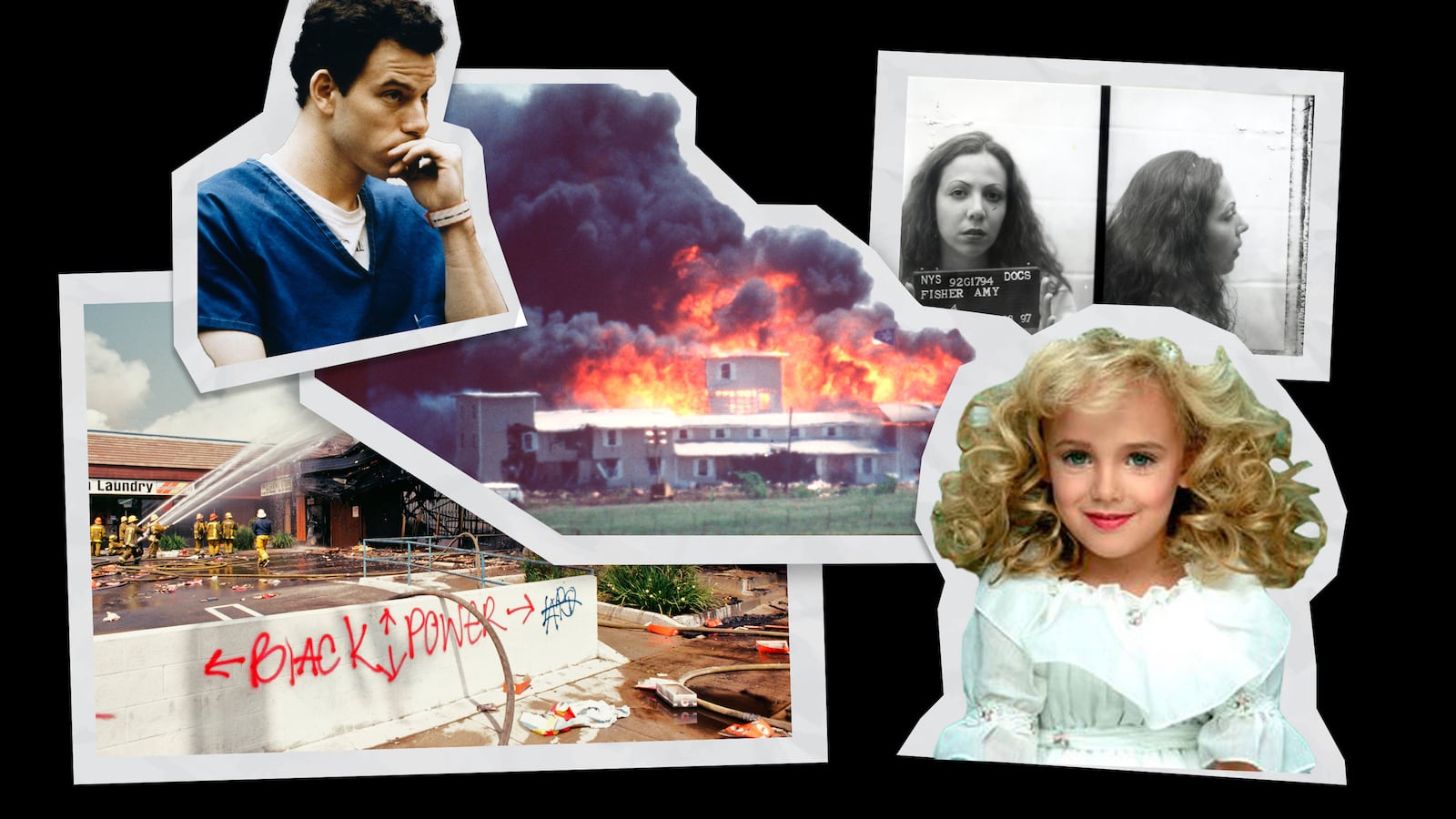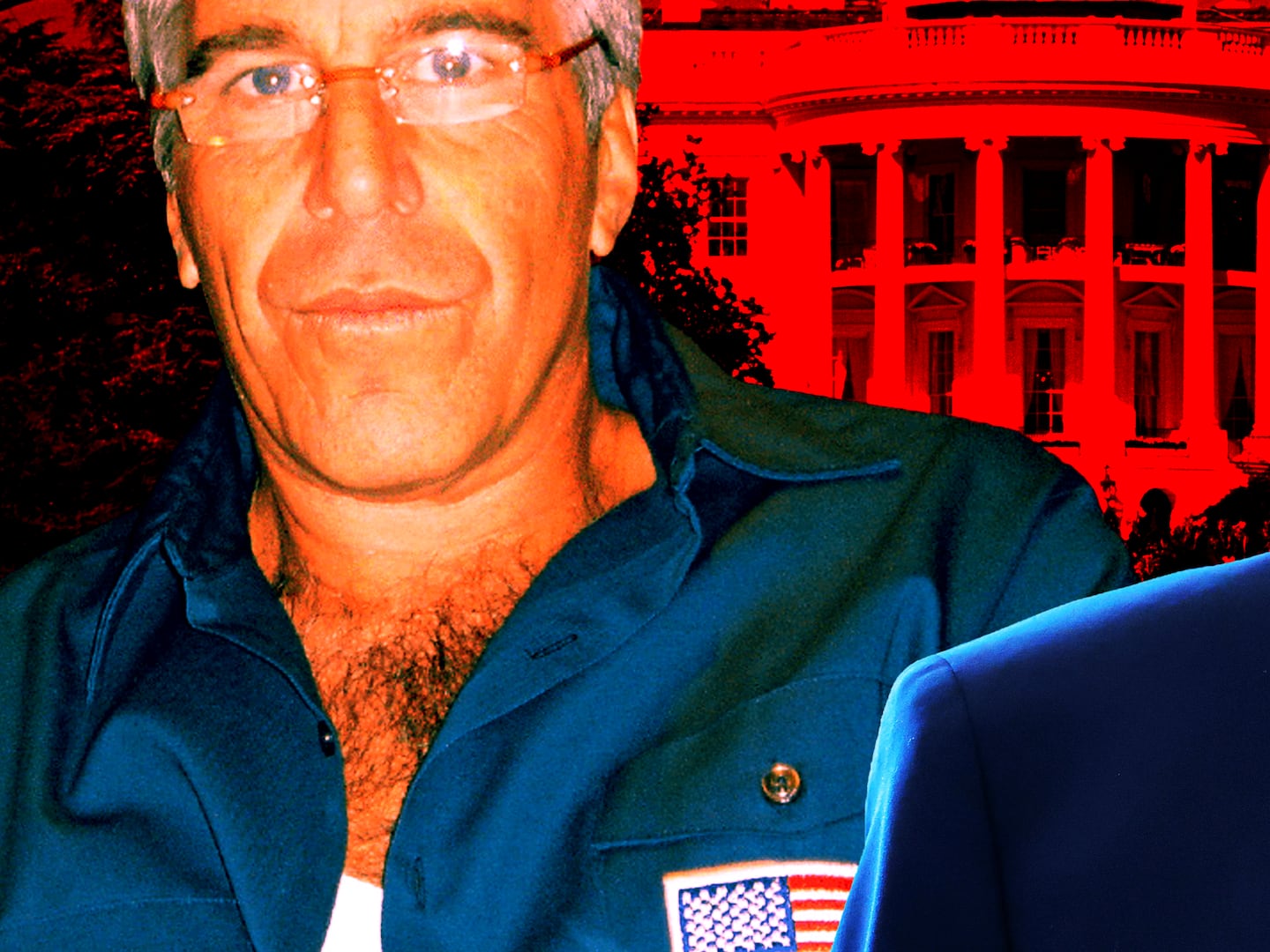People often ask how I got into true crime. I envy my fellow true crime fans who can point to one crime that sparked their fascination with the genre. I wish I had such a story. But true crime has been in my consciousness for as long as I can remember.
I was born the year after the launch of the Missing Children Milk Carton Program, the extremely low-tech precursor to the AMBER Alert. I remember staring at the tiny dots that made up the grayscale photos of missing children and reading the stats: date and location last seen, DOB, height and weight, race and sex, eye and hair color. I wondered what happened to these children who looked like me—the milk carton kids were almost invariably white, despite the fact that over the course of the program’s nearly 15-year run, Black and Latino kids were disproportionately victims of nonfamily abductions (known colloquially to us ’80s and ’90s babies as “stranger danger”).
I grew up watching Unsolved Mysteries and America’s Most Wanted with my family, hoping to see that one word we all longed for at the end of a segment: UPDATE. The voice of Robert Stack, accompanied by that eerie, tinkly synth music, still freezes me in my tracks. Then, a perfect storm: Just as my reading comprehension scores began to soar in elementary school and my parents became preoccupied with my trouble-making older sibling, the ’90s happened.
The sensationalized true crime media of the early to mid-’90s is all a blur in my mind, but when I revisit the stories I remember most, the earliest is the Menéndez family murders. On Aug. 20, 1989, Lyle and Erik Menéndez shot and killed their parents, Kitty and José, as they snoozed in front of the TV in the den of their Beverly Hills mansion. Lyle and Erik were arrested the following spring. They were portrayed by the media throughout the trial as spoiled, greedy, and privileged.
All eyes were on Los Angeles in 1991 and 1992, after eight LAPD officers beat Rodney King—pulled over for speeding—in early March and, less than two weeks later, when 15-year-old Latasha Harlins was shot by convenience store owner Soon Ja Du, who thought Harlins was stealing an orange juice. Du was found guilty of voluntary manslaughter in November of that year and sentenced to 10 years in prison, but that was later reduced to a suspended sentence and a fine. In April 1992, four officers put on trial for beating Rodney King were acquitted and the city erupted into six days of unrest, reported as “rioting.”
Things hit closer to my New York metro–area home soon after, when 17-year-old Amy Fisher was arrested for shooting Mary Buttafuoco. Buttafuoco was the wife of Fisher’s 36-year-old “boyfriend.” The press dubbed Fisher the “Long Island Lolita.”
They kept coming: A cult leader and his followers went down in a blaze of fire and fury in Waco, Texas, in February 1993. In June, a woman in Virginia cut off her husband’s penis and threw it out of a car window across the street from a 7-Eleven (I remember hearing this one on the radio while I was driving to work with my father, as I sometimes did during the summer, and thinking it was a joke based on how the shock jock reported it). That same month, the iconic Soul Asylum video for “Runaway Train” came out, depicting scenes of child abuse interspersed with photos and details of real missing and endangered children. That video haunts me to this day.
It’s not like it was all true crime all the time when I was a kid, though. I had other hobbies. I was really into dance, gymnastics, and figure skating. It was a respite from all the sensationalized sound bites and headlines swirling around me. In 1994, I became fond of a figure skater who resembled my sister—Nancy Kerrigan. Oh... well, never mind.
That was the same year the crime of the century occurred—the murders of Nicole Brown Simpson and Ron Goldman in June. Opening statements for the ensuing trial of the century were televised the following January, and it was the talk of 1995. One of my best friends in school that year was a transplant from California. Her name was Nicole Brown. It was a weird year for her. Over summer vacation, my family took a trip to Los Angeles that included a double-decker bus tour past Stanley Mosk Courthouse, cables overflowing from the window where the trial was held, all to accommodate the 19 TV stations covering the trial. O. J. Simpson was acquitted in October. Going off the running commentary from my middle-class white parents, I really couldn’t understand why.
There were other crimes that year that rocked me. Scott Amedure was murdered in March after announcing on The Jenny Jones Show that he had a crush on a friend. That’s how I learned you could be killed for liking someone of the same gender, a lesson that followed me into early adulthood. In April, Timothy McVeigh detonated a truck bomb outside the Alfred P. Murrah Federal Building in Oklahoma City, killing 168 people, including children in the building’s day care. I doubt many who have seen the picture of firefighter Chris Fields holding Baylee Almon’s lifeless body were able to ever forget it. She had turned 1 the day before the bombing. I turned 10 two days after.
These are just some of the crimes I remember from the first decade of my life. I’ll stop there for now—before I get into JonBenét and the helplessness I still feel when I realize that we’ll likely never know for sure how she ended up garroted in that basement on Christmas Day 1996.
If family TV time didn’t clue you in, my parents didn’t express much concern over their grade school–age youngest child consuming stories about child abduction, rape, murder, and other violent crimes. I’m not sure how common this was back then—many of my friends remember watching the ten o’clock news with their parents. One recalls watching Snapped with her mother. She also ended up a true crime fanatic.
Needless to say, this unsupervised, unfiltered media consumption had an effect on me. I was enthralled by true crime at a young age, and there was no turning back. My own mother’s stories about her connections with the Son of Sam and Amityville murders in 1970s Long Island may have given me an extra push.
I sometimes question this fascination. I worry that it’s grotesque and that there may be something wrong with or broken in me. But after reading, watching, and listening about so many serial killers, murderers, and rapists—not to mention manipulators, abusers, and scammers—I’m pretty sure I know a bit about what makes a person bad, and I don’t think an interest in true crime is necessarily any part of that.
Since O. J.: Made in America and The People v. O. J. Simpson: American Crime Story came out in 2016, I’ve seen a lot of retrospectives on the crimes I remember from my childhood. Back then, I had no idea what role the Rodney King beating, the murder of Latasha Harlins, and the subsequent uprising in Los Angeles played in the O. J. Simpson trial verdict. I was young when it happened, but I don’t remember that connection being made in the media, and certainly the adults around me were not discussing the broader picture of racial injustice in the United States.
I also didn’t know the Menéndez brothers had been sexually abused by their parents. I wasn’t able to put my 7-year-old finger on exactly what was fishy about a 36-year-old man convincing a 17-year-old girl that they were in an equal romantic partnership and the media reporting it as such. I do wish I knew then what I know now about that one. I didn’t remember the role the ATF and FBI played in the Waco siege, nor did I understand that Lorena Bobbitt was brutally raped the night she cut off her husband’s penis—the culmination of years of abuse. It was Tonya Harding’s abusive ex-husband, and not the skater herself, who orchestrated the attack on Nancy Kerrigan, and it turns out “stranger danger” accounts for only 28 percent of abductions. Children are far more likely to go missing at the hands of a family member.
There are two things I’ve learned from re-examining these crimes through a 21st-century lens. The first is that children under 10 should probably not engage with violent true crime content. I don’t have kids, but... parents know that now, right? I mean, in the long run, it made me more empathetic, led me to fulfilling work that I believe has helped people and raised awareness for important issues, and helped me enormously to put my own problems into perspective. But just wait until puberty and ease them in is all I’m saying.
The second is that exploiting trauma for capitalistic gain is a real risk when creating true crime content, and one that creators and consumers alike should be wary of. As the late great true crime writer Michelle McNamara put it, “I love reading true crime, but I’ve always been aware of the fact that, as a reader, I am actively choosing to be a consumer of someone else’s tragedy. So like any responsible consumer, I try to be careful in the choices I make. I read only the best: writers who are dogged, insightful, and humane.”
I strive to practice this principle myself, and urge other true crime fans—of books, docuseries, movies, podcasts—to do the same. These stories deserve nuance, the victims deserve respect and justice, the issues around these crimes call for awareness. And the phenomenon of bountiful and ubiquitous true crime media landscape available to us today lends itself to all of this, as long as we continue moving toward nuance and away from the sole purpose of ratings and ad sales.







